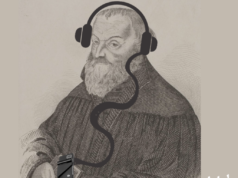Would you like to effectively communicate with your co-workers and other involved parties and create a positive connection?
Recognise the states other people are in and all those small details in relations with others that we often overlook? Communication is an extremely important factor of success, as we communicate not only when we do it verbally.
Neuro-linguistic programming is a relatively young science, having its roots in the early 1970s as the result of collaboration between Dr. John Grinder, a linguist who worked as an assistant at California University in Santa Cruz, and psychologist Richard Bandler, who was interested in psychotherapy. Grinder and Bandler decided to study and identify communication and behaviour patterns of the three most prominent therapists of the time: Fritz Perls (Gestalt therapy), Virginia Satir (family therapy) and Milton Ericson (hypnotherapy). Their detailed breakdown of patterns of work by all three therapists lead to the formation of the foundations of NLP (an abbreviation of this complex science).
Numerous disciplines and sciences have contributed to the development of neuro-linguistic programming that are based on its foundations, namely: neuro-linguistics, studying how language appears in the human brain and how the brain transforms it; cognitive science, science on learning and thinking; psychology and psychology neuroimmunology, that studies the interdependence of emotions, feelings, thoughts and bodily processes. NLP was thus primarily intended for use in psychotherapy, with techniques of the mentioned model subsequently used and applied to various fields such as: leadership, sales, organisation, management, teaching, law, consulting, education and effective interactive communication.
NLP – Science on Personal Excellence
Neuro-linguistic programming thus represents science on personal excellence and is at the same time founded on studies of successful communication patterns and the extraordinary achievements of individuals in various fields. In the language of NLP this is called ‘modelling’, which was emphasised by O’Connor and Seymour, who studied various aspects of NLP in their work Skills of communication and influencing: an introduction to neuro-linguistic programming. It is important that we are aware of the fact that body language is a mirrored version of our thoughts and feelings. The complex phrase neuro-linguistic programming is in fact in its essence ‘language of the brain’ and is composed of three words, each of which has its essential meaning. Neuro means that all our behaviour stems from neurological processes of sight, sound, smell, taste and touch; the word lingustic means that we use language to arrange our thoughts and behaviour, with the purpose of communicating with others. Language also stimulates activity in our neurological systems, while word programming refers to the ways we choose for efficiently organising our thoughts and behaviour, with the purpose of communicating with others. Language also triggers and stimulates activity in neurological systems, the word programming referring to ways we choose for effectively organising our thoughts and actions and for achieving specific objectives.
Efficient communication and business success with NLP techniques
When acting and communicating we sometimes forget basic foundations, as these often seem to us too obvious and self evident to think of. NLP assumes three factors: well assumed objective, training in sensual acuity, and flexibility. Here we need to emphasise that when forming objectives we need to be careful that they are clear and specific, positively formed, with firm time frame, achievable with our own abilities, emotionally and rationally in line with personality. Flexibility is of extreme importance, because of the fact that we can be quite limited in our personal or business actions. If we only offer ourselves one option how to react to a certain event this can lead to great rigidity in business relations, and at the same time it emphasises the idea that various alternatives are always needed on how to approach a problem, relationship or communication. The third factor for successful actions of an individual in the field of NLP is called training in the sensory sharpness, which means a conscious development of perceptions with all the bodily senses: sight, sound, touch, smell and taste, i.e. where to focus on how to change or train the sensory filters, so that we could notice what we didn’t notice before. By doing this we will consciously switch from autopilot, or so-called unconscious training, and we will see small but crucial signals, nuances which are a good indicator of how we ourselves and others react. Taking into account and integrating all of the three above mentioned factors can lead to a more effective level of communication and to more effective personal and business actions of an individual.
Everything communicates!
Business relations of any kind demand well developed language skills, which is why understanding the components of communication is of utmost importance. It is ever possible to be in the state of non communication, as we also communicate when no verbal expression is used. Albert Mehrabian conducted an interesting study into the effect of facial expressions in communication. The findings of his research show that the body language of a speaker represents 55% of the impression – posture, movements, eye contact; 38% tone of voice, and only 7% the contents of our presentation. So the main difference is in how we tell something and not so much what we tell.
Source: O’Connor and Seymour (1996, 42).
Voice 38%
Body language 55%
Words: 7%
Mirroring and making a good connection
As we can see from the above diagram, non verbal communication is of extreme importance for making a good connection. Researchers and authors of books on NLP, such as Heap, Dilts, O’Connor and Seymour, assume that by mirroring our client’s (‘co-speaker’s’) verbal and non-verbal behaviour, which encompasses posture, mimics, movement (and connection) with eyes, adjusting our breathing rhythm and adjusting rhythm, tone, pitch and speed of speech, we can be in tune with the client’s representation of the world, where a rapport or quality relationship, trust and effective communication develops. This technique recommends reacting to speakers’ movement with similar movement. Here it is advisable that we adjust to the tempo of the speaker’s speech; while visual types of people speak fast, audio types are more medium speed and the kinaesthetic types operate more slowly. The NLP model assumes that rapport (good relationship) and effective communication with the use of this technique will definitely be achieved. Communication thus always means a relationship, and is never just a one-way information flow.
Urša Eva Pucelj













